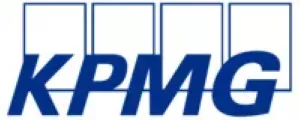Exploring the impact of rising inflation on property prices, potential increase in mortgage interest rates, and their effect on housing affordability.
The increase in prices
The first half of 2022 witnessed a significant growth in inflation across most world economies, resulting in increases in the price of various goods and services. Malta was not immune to such inflationary pressures and saw consumer prices jump from an average annual rate of 0.7 percent last year, to an annual rate of 6.8 percent in July 20221. The industrial producer price index, which measures the development of transaction prices from the point of view of the producer, increased even further for goods traded on the domestic market. In June 2022, the index increased by 9.2 percent over June 20212.
The rise in building costs
For operators in the construction industry, the increase in inflation means higher charges for building materials and higher prices for machinery. The industry was also faced with higher costs of compliance to align with recently introduced building regulations.
While these challenges are common to other economic sectors, construction operators are faced with the added difficulty of having to factor in these price movements several months in advance, since most construction work is project-based, and prices are generally agreed upon prior to the commencement of works. To an extent, this is also true for residential properties, since a number are sold on plan. In fact, in discussions with KPMG, leading developers expressed the view that operators who sold on plan may find it difficult to finish projects within the original cost budget in the current environment.
The impact on the price of apartments
During a recent interview, Michael Stivala, President of the Malta Developers Association (MDA), was quoted as saying that the cost to build has increased by 30 to 40 percent, which amounts to an average of €10,000 to €15,000 per apartment. The Construction Industry and Property Market Report 2022, prepared by KPMG and commissioned by the MDA, estimated the price of a median apartment in 2021 at €249,000. Factoring in the quoted increase in building costs, would translate into an increase in asking property prices ranging between 4.0 and 6.0 percent – excluding other potential increases in the cost of land, marketing, and estate agency fees. However, it remains to be seen whether such costs would be fully borne by buyers, or whether an element of the cost increase is absorbed by the seller.
A decrease in buyer affordability
On the other side of the spectrum, the increase in property prices, and inflation overall, is impacting buyer affordability. KPMG computes the Housing Affordability Index (HAI), also as part of the Construction Industry and Property Market Report. The HAI was computed at 76.4 percent, meaning that a household earning the median income would only be able to borrow 76.4 percent of the financing required to purchase a median-priced apartment. For reference, an HAI of 100 percent indicates that a household with median income would be able to borrow the exact amount required to purchase a median priced property. Were developers to pass on the full increase in building costs to the buyers, the HAI would decrease from 76.4 percent in 2021, to between 72.0 and 73.4 percent, unless household incomes increase by a corresponding amount, or banks loosen their lending criteria.
Rising interest rates
With inflation rapidly on the rise, the European Central Bank (ECB) is expected to raise interest rates further in the coming months, in a bid to rein in inflation. In July 2022, the ECB reversed the trend for negative interest rates and increased the ECB rate from -0.5 percent to 0.0 percent. Industry analysts expect this to rise to 1.25 percent within circa 18 months. Such an increase would very likely result in increases in the local banks' interest rates, thus increasing borrowing costs for both developers and buyers. Such a measure would further increase the developers' costs and decrease buyer affordability, by increasing the monthly loan repayments, and in turn decreasing the amount buyers could borrow.
Footnotes
1 National Statistics Office Malta – News Release 143/2022, Harmonised Index of Consumer Prices (HICP): July 2022 dated 18 August 2022.
2 National Statistics Office Malta – News Release 133/2022, Industrial Producer Price Indices: June 2022 dated 29 July 2022.
The content of this article is intended to provide a general guide to the subject matter. Specialist advice should be sought about your specific circumstances.




